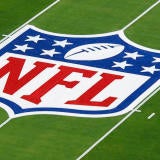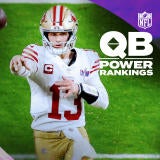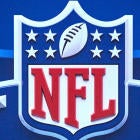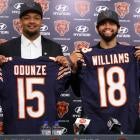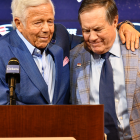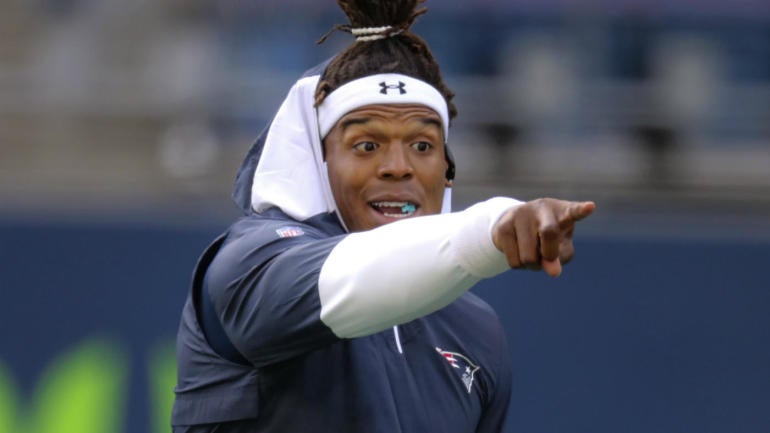
A flurry of signings took place as the start of the regular season was approaching. Multiple players who would have been highly sought after in free agency or franchise tag candidates were taken off the market.
Some of the more notable signings of players heading into a contract year since the start of training camp include edge rusher Joey Bosa and cornerback Jalen Ramsey. Bosa signed a signed a five-year, $135 million contract extension making him the highest-paid defensive player in NFL history at $27 million per year. The deal has $102 million in overall guarantees where $78 million was fully guaranteed at signing, which are both the most ever in an NFL contract for a non-quarterback.
Ramsey became the NFL's first $20 million per year defensive back. He signed a five-year, $100 million extension worth up to $105 million through salary escalators. Ramsey also set records for cornerbacks with $43.703 million fully guaranteed at signing and $71.203 million in total guarantees.
The NFL and NFLPA set a 2021 salary cap floor of $175 million because of the COVID-19 pandemic causing a loss of revenue this year. The revenue loss will be spread out the next three years. If revenues are better than expected, the 2021 salary cap could be higher, but will likely remain below the current level of $198.2 million. The top contract year players escaping serious injury and poor performance in the final year of their deals probably won't be affected by the lower salary cap. These types of players found riches during free agency in 2012 and 2013 when there was minimal growth in the salary cap.
Here are 15 players to keep an eye on during their contract year.
The Cowboys have consistently dropped the ball in negotiations with Prescott. Had signing Prescott as quickly as possible been the top priority right after the 2018 season, when he was heading into the final year of his rookie deal, a contract in the $30 million per year neighborhood was conceivable. At that time, Falcons quarterback Matt Ryan was the NFL's second highest paid player at $30 million per year.
By waiting, Prescott has the Cowboys between a rock and a hard place. Dallas probably can't sign Prescott long term for less than $40 million per year because of Deshaun Watson's deal and the franchise tag dynamics. Watson recently signed a four year, $156 million extension averaging $39 million per year. Putting a second franchise tag on Prescott in 2021 for a 20 percent raise, mandated by the NFL collective bargaining agreement, will be $37,690,800. Prescott can afford to play hardball with Dallas after making $31.409 million this season because he would become an unrestricted free agent in 2022 or receive a third franchise tag at a 44 percent increase over the 2021 figure for $54,274,752.
The Patriots may have the NFL's biggest bargain signing this year as Newton tries to resurrect his career after being plagued by foot and shoulder injuries over the last two seasons. Newton signed a one-year deal with a base value of $1.75 million, which is worth up to $7.5 million through incentives. In order to get the entire $7.5 million, Newton will have stay healthy, win the Super Bowl and earn All-Pro honors. The 2015 NFL MVP isn't concerned about his contract. The money will take care of itself if Newton continues his hot start to this season. The Patriots retained the ability to designate Newton as franchise or transition player with his paltry one-year deal. The 2021 non-exclusive quarterback franchise tag could be in the $25 million neighborhood with a steep drop in the salary cap.
Godwin had a breakout 2019 season in which he caught 86 passes for 1,333 receiving yards with nine touchdowns despite missing the final two games with a hamstring injury. He was named to his first Pro Bowl and earned second team All-Pro honors. Godwin surely took note of the four year extension wide receiver Keenan Allen recently received from the Chargers averaging $20.25 million per year with $50 million of guarantees.
The Texans didn't do the Ravens any favors with Laremy Tunsil's $22 million per year extension, which contains an offensive lineman record of $40 million fully guaranteed at signing. Tunsil having a higher than expected average yearly salary on a shorter than anticipated term likely complicates matters for the Ravens.
Stanley, who is making $12.866 million this season on a fifth year option, was selected seven picks before Tunsil in the 2016 NFL Draft with the 6th overall pick. Both were named to the Pro Bowl for the first time last season, with Stanley also earning first team All-Pro honors. Stanley seems destined for a franchise tag in 2021 for $15,439,200, a 20 percent raise over his option year salary, absent a new deal.
Clowney couldn't find any takers in free agency at his original asking price, which was reportedly over $20 million per year, because of a lack of sacks and a core muscle injury that required surgery. He signed a one-year deal for $13 million with the Titans to reunite with Mike Vrabel. The Titans head coach was Clowney's defensive coordinator with the Texans in 2017 and linebackers coach for the three seasons before. Clowney had career highs of 9.5 sacks, 18 quarterback hits and 21 tackles for loss in 2017 under Vrabel. Duplicating or bettering 2017 is Clowney's best chance of getting the money in free agency next year that he couldn't find this year.
Having Green play on an $18.171 million franchise tag made the most sense for the Bengals given his injury history. Green has been one of the NFL's best wide receivers when healthy, which he hasn't been in recent years. He didn't play at all last season because of an ankle injury suffered in training camp that required surgery. Green, who is 32, also missed six games in 2016 because of a hamstring tear and was limited to nine games in 2018 due to a toe injury also requiring surgery. Green staying healthy and getting on the same page with 2020 number one overall pick Joe Burrow could go a long away in determining what type of contract Green's signs in 2021. A second franchise tag in 2021 at $21,805,200 is probably going to be too cost prohibitive for the Bengals.
Nobody could have foreseen Barrett having a league leading 19.5 sacks in 2019. The 2014 undrafted free agent produced a total of 14 sacks in his previous four seasons with the Broncos. That led to Barrett getting the $15.828 million franchise tag for linebackers from the Buccaneers. Barrett filed a grievance contending he should be classified as defensive end instead for $17.788 million. Proving 2019 wasn't an anomaly should put Barrett in a position to top the $20 million per year mark.
Williams was acquired from Washington during the middle of the 2020 NFL Draft when left tackle Joe Staley retired. The 49ers reworked Williams' contract during the offseason to include a clause where he can't be designated as franchise or transition player after the season. The clause probably gives the 32 year old enough leverage for a shorter term deal averaging at least $20 million per year to remain in San Francisco.
Retaining Scherff, who is playing under a $15.03 million franchise tag, takes on additional importance after trading a disgruntled Williams to the 49ers. The three-time Pro Bowler dodged a bullet by avoiding a serious knee injury in Sunday's contest against the Cardinals. He is expected to miss three to five weeks with a sprained right MCL. Ensuring that Scherff stays in Washington will likely require a long term contract averaging significantly more than the NFL's highest paid interior offensive lineman because a second franchise tag in 2021 with a 20 percent raise would be $18.036 million. The current standard is the four-year, $56.55 million extension averaging $14,137,500 per year Brandon Brooks received from the Eagles during the middle of last season.
A second franchise tag in 2021 for $12,728,400 isn't of the question after the Chargers signed Allen and Bosa to long term deals. Henry should be able to take advantage of 49ers tight end George Kittle dramatically re-setting the market at $15 million per year with the true breakout year that's eluded him. He probably would have been looking at a deal comparable to the four year, $42 million contract with $23 million in guarantees Austin Hooper received from the Browns in free agency if on the open market this year.
The Packers and Bakhtiari, who is arguably the NFL's best pass blocking offensive tackle, haven't been close in talks about a contract extension. Bakhtiari will certainly reap the benefit of Laremy Tunsil raising the salary bar for tackles in April. Prior to Tunsil's $22 million per year deal, the four-year extension Lane Johnson signed with the Eagles during the middle of last season for $18 million per year set the tackle market. If necessary, the Packers could designate Bakhtiari as a franchise player during the offseason for $17.54 million.
Ngakoue wanted away from the Jaguars so badly he put his money where his mouth is. In order to facilitate a trade to Minnesota he took over a 30 percent pay cut from his unsigned $17.788 million franchise tender. He is making $12 million to play this season for the Vikings. Unlike Clowney, who took approximately $1 million less in his franchise player trade from the Texans to Seahawks shortly before last season, the Vikings can franchise Ngakoue during the offseason. Ngakoue stands to make roughly $27.5 million on two franchise tag instead of $39,123,600 if designated twice without the pay cut.
The running back market is well-defined with Dalvin Cook, Derrick Henry, Alvin Kamara and Joe Mixon signing multi-year deals averaging between $12 million and $12.6 million per year since the middle of July. Technically, Kamara's deal averages $15 million per year but he has no chance of seeing the $25 million in his 2025 contract year. Carson is fifth in rushing over the last two seasons with 2,381 yards. Some might suggest that Seattle shouldn't give Carson a long term contract because he is injury prone. Lack of durability didn't stop the Vikings from paying Cook, who has played four fewer career regular season games than his fellow 2017 draftee. The Seahawks will have the franchise tag at their disposal if Carson's contract expires. At the $175 million 2021 salary cap floor, next year's running back number projects to $8.3 million.
David, who is 30, may be the NFL's most underappreciated off-ball linebacker. He is in the final year of the five-year, $50.25 million extension he signed in 2015. The going rate for a Pro Bowl caliber three down off-ball linebacker is $13 million to $15 million per year, notwithstanding 31 year old Demario Davis just re-upping with the Saints on a three-year, $27 million extension (worth up to $28.5 million through incentives). Former Buccaneer Kwon Alexander signed a four year deal with the 49ers in 2019 free agency averaging $13.5 million per year although he had torn the ACL in his left knee during the middle of 2018 season.
Nick Foles was acquired from the Jaguars in an offseason trade because the Bears weren't sold on Trubisky, 2017's second overall pick. The Bears declined to pick up their fifth year option in 2021 with Trubisky for $24.837 million, which equals this year's quarterback transition tag. Trubisky surprisingly beat out Foles for Chicago's starting quarterback job. If Trubisky maintains the job, the Bears should think twice about making a long term commitment given his track record. As long as the 2021 salary cap is under $180.5 million, the Bears will get a slight financial break using a franchise tag on Trubisky compared to picking up his fifth year option. At the $175 million salary cap floor, the 2021 quarterback number projects to $24.072 million.
Others: Bud Dupree, EDGE, Steelers; Kenny Golladay, WR, Lions; Anthony Harris, S, Vikings; Aaron Jones, RB, Packers; Matthew Judon, EDGE, Ravens; Patrick Peterson, CB, Cardinals; Allen Robinson, WR, Bears; JuJu Smith-Schuster, WR, Steelers; Richard Sherman, CB, 49ers; Justin Simmons, S, Broncos; Joe Thuney, OG, Patriots; Marcus Williams, S, Saints.



































